Mammals are considered the most versatile group of animals in the world. With humans included, many apex predators on the top of the food chain are mammals. Examples include tigers, lions, killer whales, panthers, wolves, and many more.
Almost all of these large mammals share similar traits, which include sharp claws and teeth that help them claw and shred their prey.
However, not all mammals possess these intimidating traits. Some possess hoofs on their feet and don’t prey on other mammals. Scientifically, they are known as ungulates.
Ungulates are mammals with hoofed or modified toenails found on the lower end of their legs.
Most ungulates that exist are also herbivorous mammals.
There are two major ungulates: the even-toed (Artiodactyla) and odd-toed (Perissodactyla) mammals. Here are some of the species of hoofed mammals.
Table of Contents
1. Cow
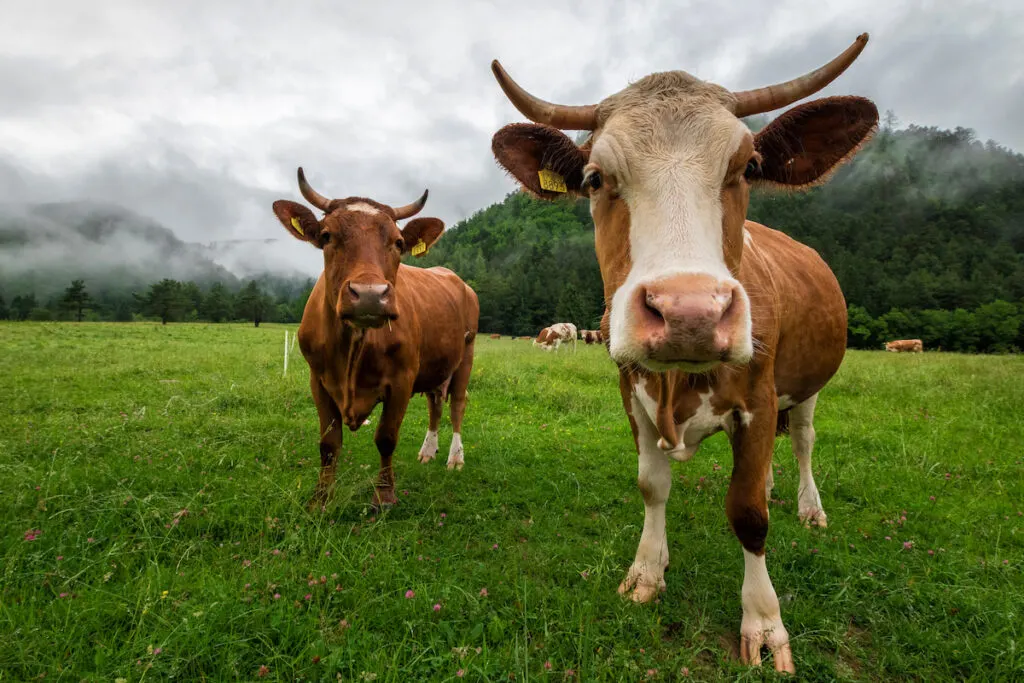
As one of the world’s most famous farm animals, cows are considered ungulates. They have vaguely circular-shaped hooves consisting of two separate parts, making them even-toed ungulates. Like humans, these hooves act as their nails and are made from keratin.
Breeders and farmers tend to trim cow hooves to prevent excessive growth. Untrimmed hooves can cause different health issues, including lameness and the inability to walk comfortably, especially on harsh terrains.
If the hooves are left untrimmed, they can cause injuries and cuts to the lower part of these animals’ legs, leading to infection and serious illnesses such as foot rot.
2. Horse
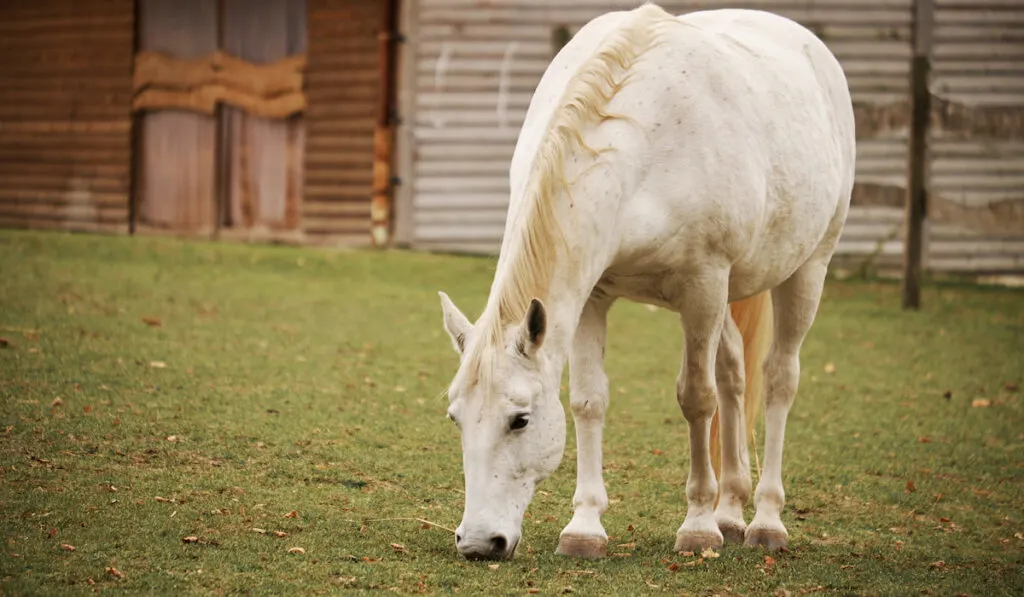
At this point, everyone knows that horses are hoofed animals. It is all thanks to the creation of horseshoes that help protect these animals’ hooves from wear and tear. But unlike cows, horses are considered odd-toed ungulates.
Horses’ hooves are made of keratin and consist of outer and inner structures such as hoof wall, coronary band, periople, inner wall, sole, frog, bars, and central sulcus.
For horse owners and breeders, the two most important parts of the hooves that they should constantly monitor to prevent injuries and health issues would be the hoof wall and coronary band.
Since horses participate in many rigorous activities and are much more active than other farm animals, keeping their hooves trimmed and free from injuries or infections is the least the owners can do.
3. Goat
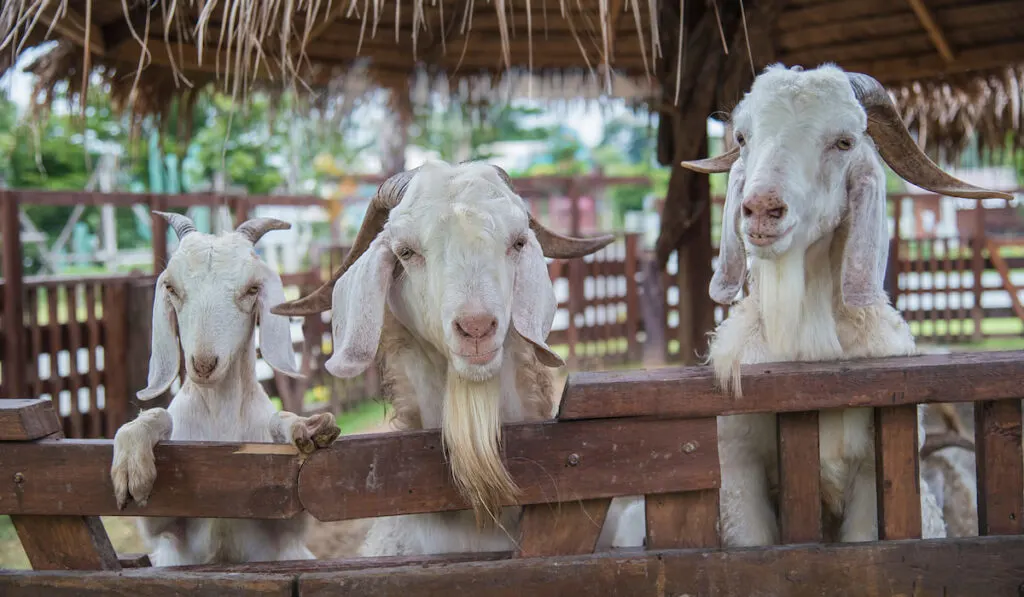
Similar to cows, goats have hooves divided into two parts. They also have another small hoof on their ankle that helps improve their grip whenever they stand, walk, or run.
Throughout a goat’s life, its hooves will always grow. Hence, maintaining a regular trimming schedule is essential to keep their hooves healthy. You can either trim their hooves by yourself or hire a professional hoof trimmer if you’re raising a large herd.
4. Sheep
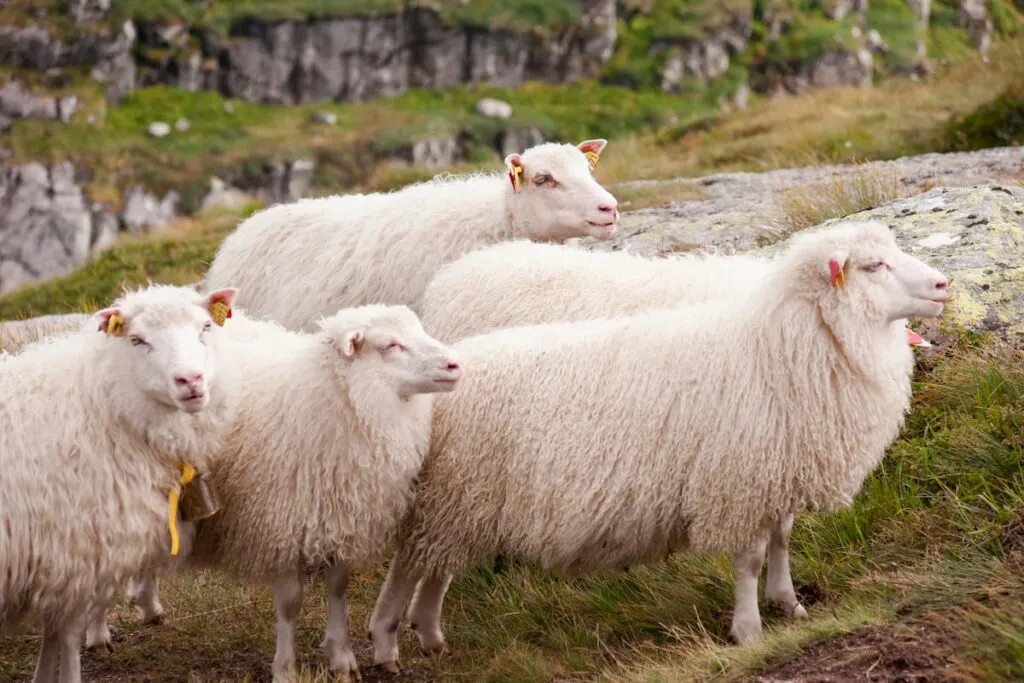
Sheep are even-toed ungulates that live in the same environment as cattle and goats. Except for their physical appearance, they have the same diet, grow the same way, and experience the same health issues as any livestock.
Although their hooves are made of keratin, they are not entirely immune to certain illnesses such as lameness, foot rot, and toe granulomas. And most of these health issues come from hooves that aren’t properly trimmed or infection from other sick sheep.
On average, it is advisable to trim sheep’s hooves at least once every two or three months.
5. Rhinoceros
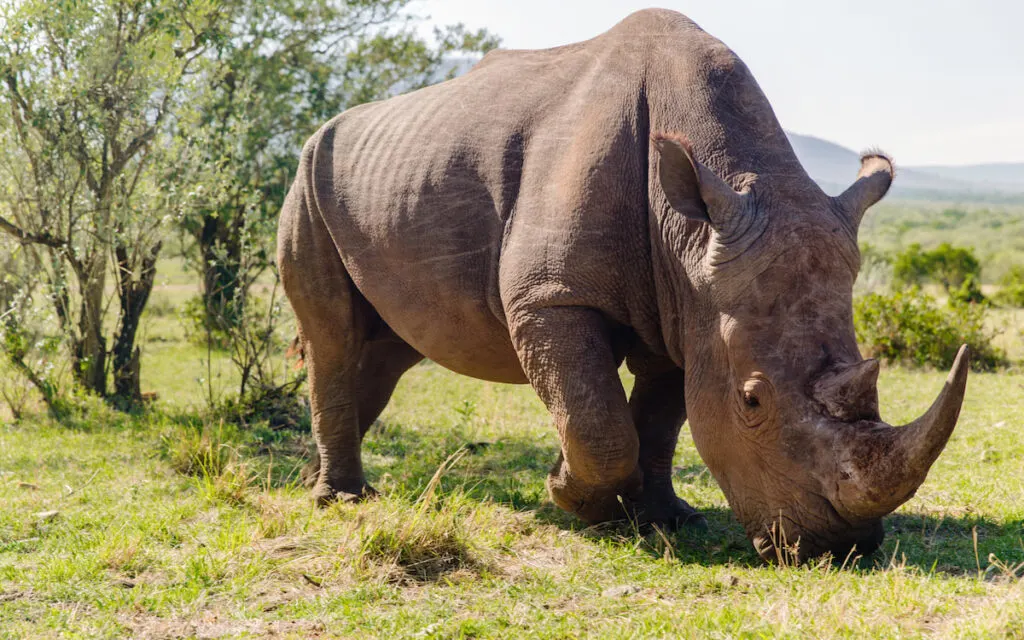
Rhinoceros are odd-toed ungulates living in just a few regions, such as Asia, Southeast Asia, and Africa. These large-sized mammals can be divided into four major species: the Indian rhinoceros, the Sumatran rhinoceros, the White rhinoceros, and the Javan rhinoceros.
Adult rhinoceros typically weigh between 1,500 and 2,200 pounds and often stand between 4 and 10 feet tall. They are easily recognized by their stocky, large, and muscular bodies, thick skin, and large horns located on top of their noses.
Most rhinoceros species are on the verge of extinction due to illegal hunting and poaching. They are being hunted and killed for their horns which are priced at almost a quarter million dollars on the black market.
Preventive measures, laws, and an international ban on rhinoceros hunting have been made by many wildlife authorities all around the world to conserve these animals.
6. Buffalo
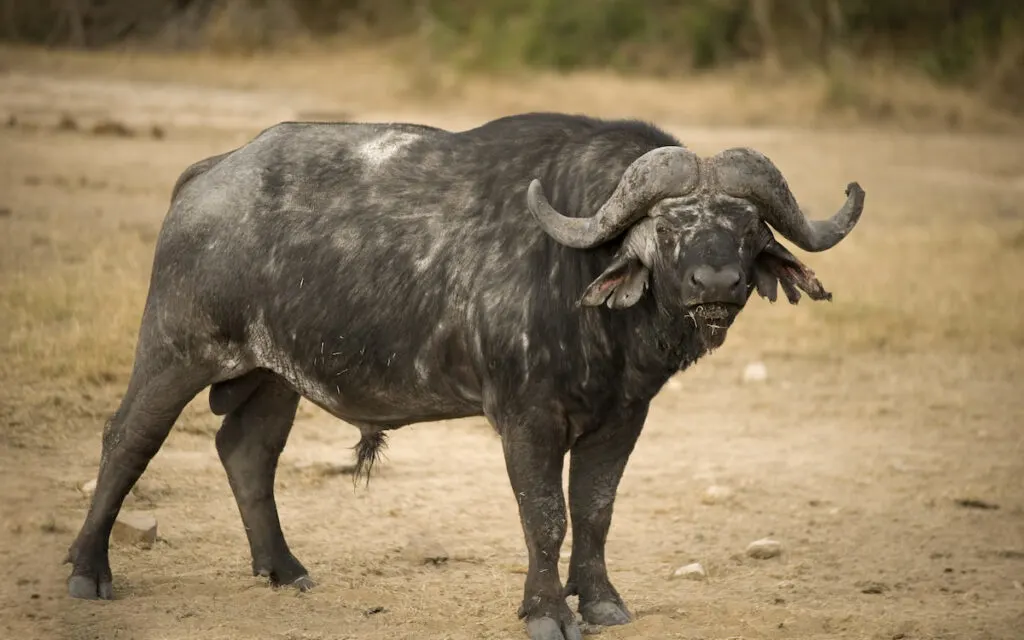
Buffalos belong to the same family as other grazing animals like cattle and gazelles. They are even-toed ungulates with toes like cattle, sheep, and goats. There are three major buffalo species that you can find out there: Cape or African buffalo, Water buffalo, and American buffalo.
Of these three species, only water buffalo are being domesticated by farmers and used to do draft and heavy farm work. They are primarily found in Asia, Southeast Asia, and India.
Meanwhile, the American buffaloes are kept and conserved in national parks and reserve lands due to the decline in their population in the early 1990s.
Water buffalos are also considered the largest species of buffalo. They stand between 5 and 6 feet and weigh between 1,500 and 2,650 pounds.
7. Gazelle
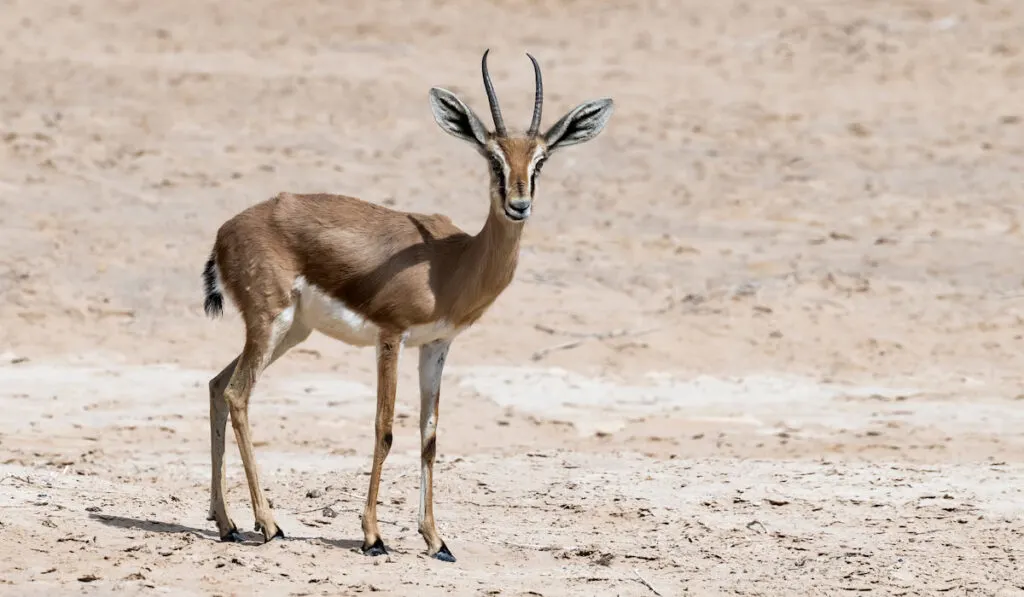
Gazelles are even-toed ungulates that live in a herd. These herbivorous animals are primarily found in many habitats, including African savannas, open grasslands, and regions in Asia and India. They belong to the same family as antelope.
At a glance, they might look like deer, but a few key characteristics make them unique and different. For instance, gazelles are much smaller than deer. They stand just between 2 and 3 feet tall.
Gazelles also possess whitish brown bodies, long black stripes on their back, and slightly curved, long horns. These animals are hunted in the wild by natural predators such as lions, tigers, hyenas, leopards, cheetahs, and wild dogs. It is estimated that there are around seventeen gazelle species, excluding the ones that are now extinct.
8. Bison
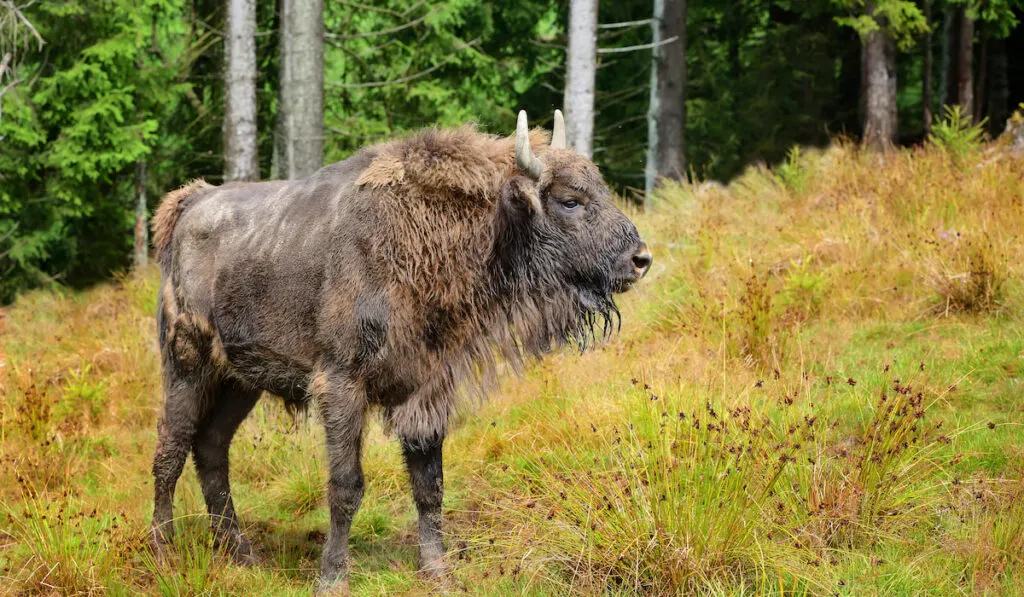
Bison, or specifically, American bison, are indigenous to North America. There is also another species that primarily inhabits Europe, which is the European bison. These large bovines are even-toed ungulates with cloven hooves.
Bison are closely related to yaks. Due to their strong physical appearance, these mammals are mistakenly assumed to be another buffalo species. If we take a closer look, there are a few differences that separate bison from buffalo.
Buffalo don’t have the shoulder humps that you can find on bison. You will also notice that most bison have coarse hairs on these humps. Meanwhile, buffalo don’t have any fur or hair on their skin. Bison horns are also much smaller compared to buffalo.
9. Wild Boar
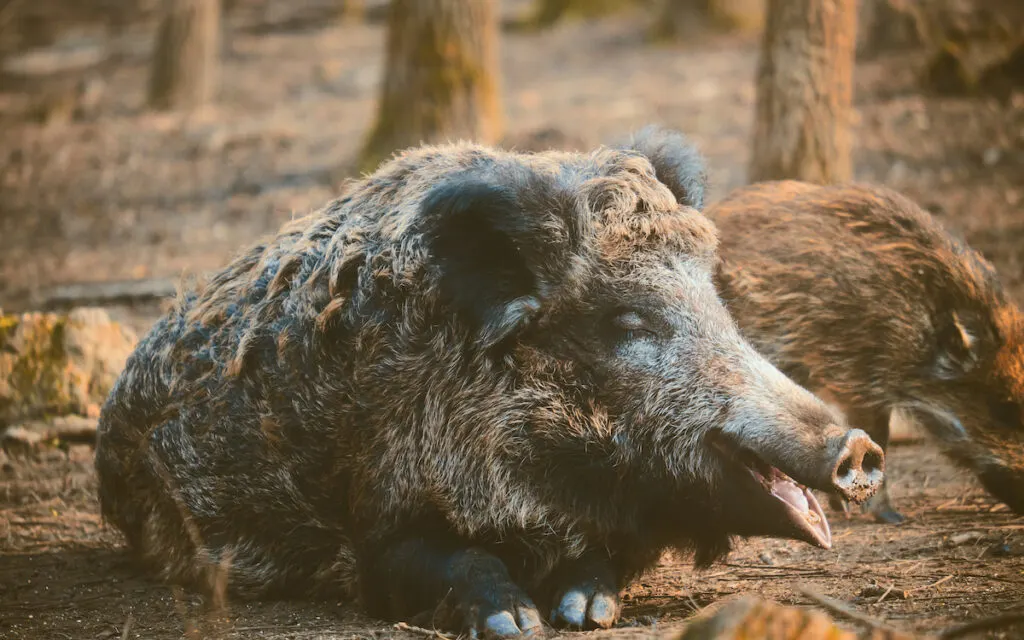
Wild boars are unique ungulates that possess mule-footed hooves or syndactyl hooves. They have four toes, two of which are positioned slightly higher than the others. These mammals also go by other names, such as wild pigs, Eurasian pigs, wild swine, and typical wild swine.
You can find wild boars worldwide, including forests in North America, Southeast Asia, Canada, Alaska, Australia, and New Zealand. They can be divided into four major types based on their geographical abundance: Eastern, Western, Indian, and Indonesian varieties.
Wild boars are easily distinguished by their large, stocky bodies, short tails and legs, small tusks near their mouths, and dense coats that come in different colors ranging from black to reddish brown to light brown and white. You can also find neck wattles under their necks that are mostly covered or hidden underneath their coats.
10. Giraffe
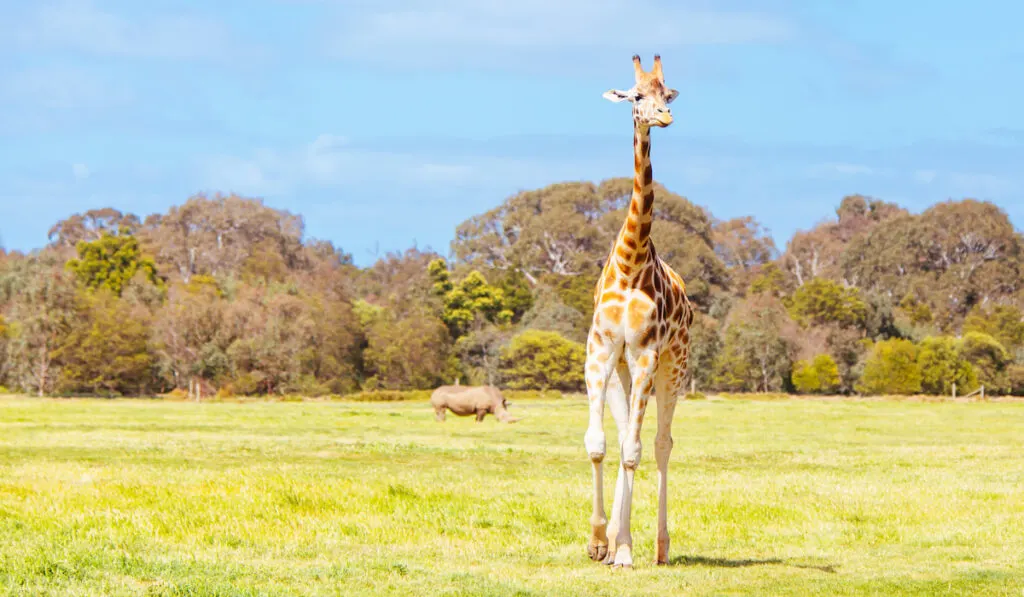
Being the tallest mammals in the world, giraffes are categorized as even-toed ungulates. These animals are native to sub-Saharan Africa, particularly in the Northern and Western regions. Giraffes usually stand between 13 and 16 feet, weighing around 4,198 pounds.
These towering animals can be divided into four major types, which are northern, southern, Masai, and reticulated varieties. Being herbivores, they primarily feed on plants, leafy branches, and twigs. With their long neck, they can easily reach higher branches of tall trees to feed on leaves and twigs.
However, being tall comes with its own disadvantage. Whenever they need to drink, giraffes have to spread their legs wider and lower their neck to reach the water surface.
11. Antelope
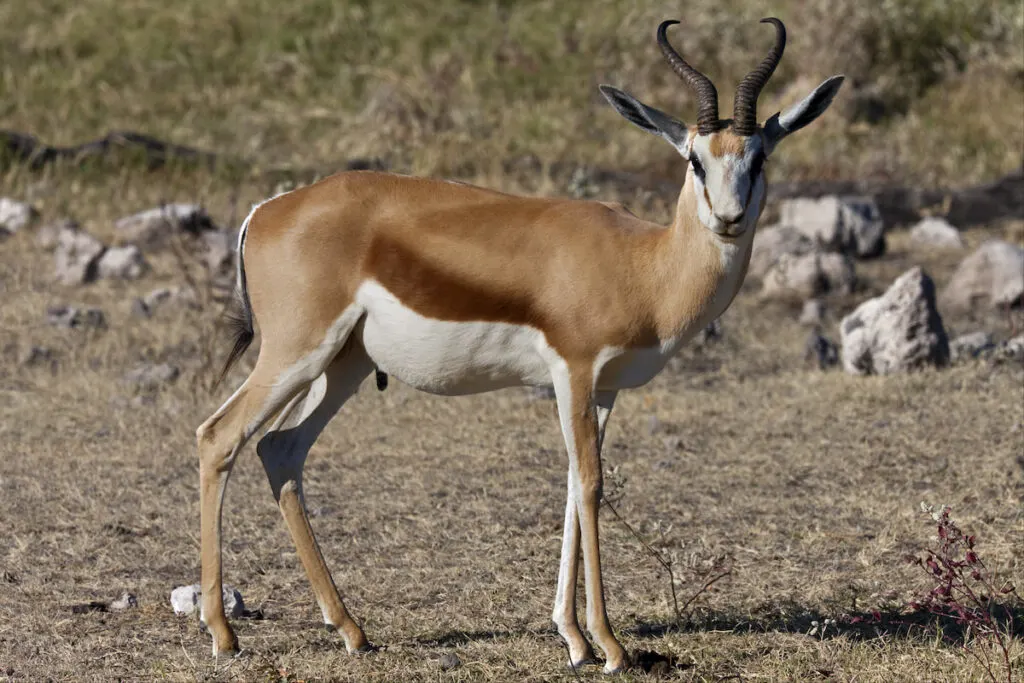
Antelopes are even-toed ungulates native to Asia, Africa, and Europe. These animals can be recognized by their slender brownish-orange or light brown bodies, dark eyes, and white underparts. Unlike gazelles, only male antelopes possess long and slightly curved horns.
What makes antelopes unique is the anatomy of their hooves.
Each variety has distinctive hooves that help these animals adapt to their surroundings.
For instance, the hooves of slender-horned gazelles are much broader than other varieties due to their living environment, which is full of sandy terrains.
Meanwhile, klipspringers possess suction-like structures or cups in the center of their rounded hooves that help them to jump on rocky surfaces.
Like many hoofed animals, antelopes live and move in a herd. They thrive on herbivorous diets like small plants, leafy branches, bushes, and grasses. In certain regions, these mammals are being hunted legally and in some other parts – illegally for their meat and horns.
12. Moose
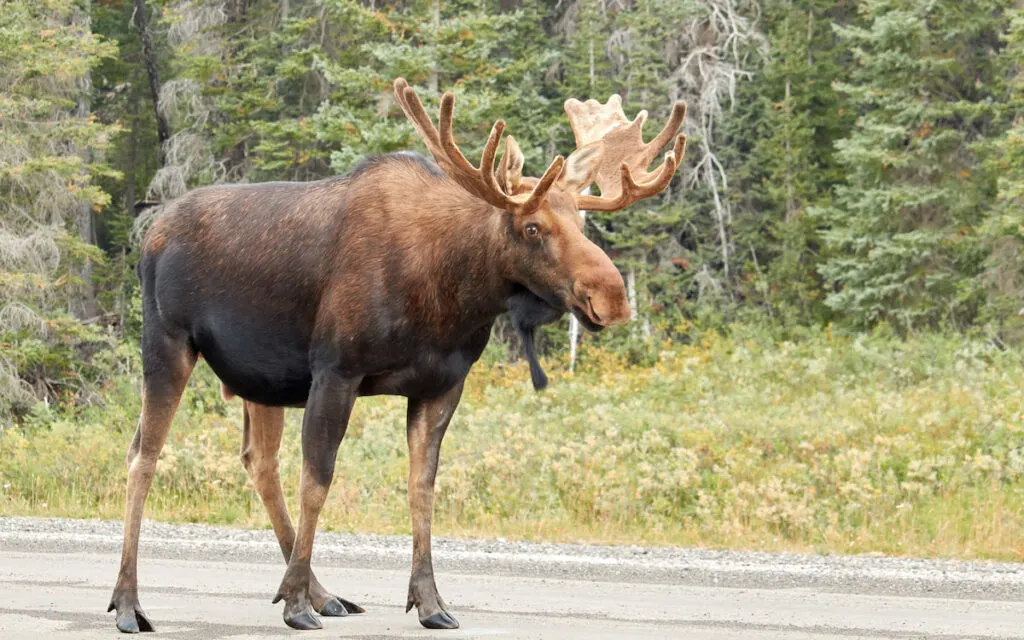
Moose belong to the same family as deer and are considered the largest ungulates in the deer family. They are also known as the Eurasian elk. These animals primarily inhabit colder regions such as the northern United States, Alaska, and Canada.
Adult moose measure between 5 and 6.5 feet tall and weigh 595 to 1,325 pounds. These mammals can be recognized by their large and wide antlers that can grow up to six feet wide; the black and brown fur covering their bodies; small ears; a small flap of skin hanging underneath their neck; and small ears.
To differentiate male moose from females, you have to look at the shape of their antlers. Male antlers are usually larger with a palmate-like shape, while female antlers are much more delicate and resemble branches of twigs.
Moose are herbivorous creatures that feed on plants, twigs, bark, and shrubs. Unlike deer, they usually move alone and don’t stay in a large herd.
13. Tapir
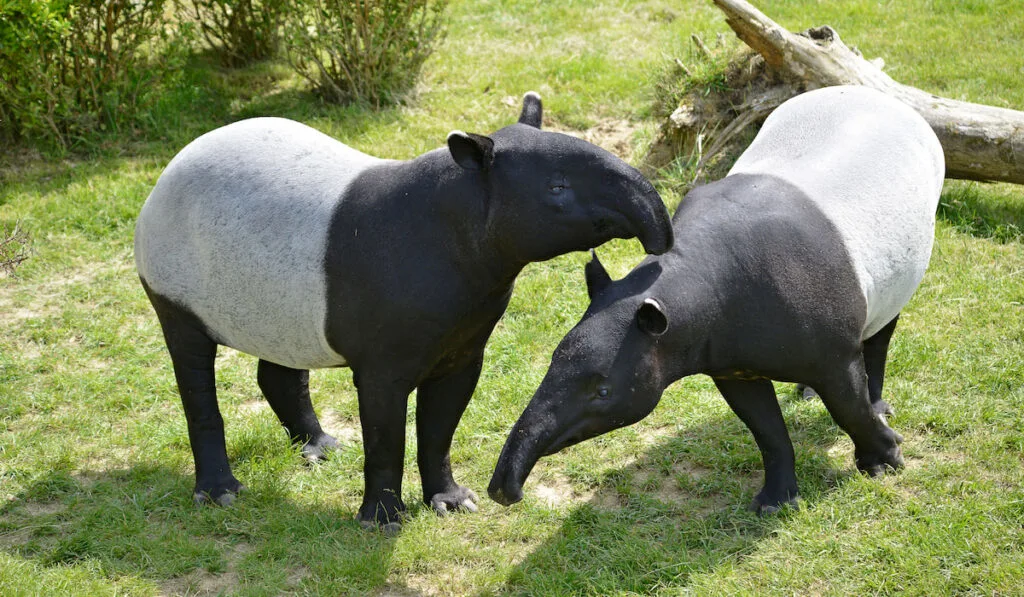
Although these animals might look like a large version of anteaters or pigs, they aren’t actually related to one another. In fact, tapirs are herbivorous creatures that only feed on plants, twigs, leafy branches, and fruits.
These mammals are odd-toed ungulates that primarily inhabit tropical climate regions, including forests in Central and South America and the Malayan Peninsula.
Five species of tapirs exist – Malayan tapir, African tapir, Baird’s tapir, the Brazilian tapir, and the Mountain tapir. Each species looks different except for their long snouts.
For instance, Malayan tapirs possess two-tone or black-and-white coloration on their bodies, while mountain tapirs possess thick, woolly coats that protect them from cold environments.
These mammals weigh between 500 and 800 pounds and stand between 2 and 4 feet at the shoulder. On average, tapirs live around 25 years or up to 30 years if the conditions are right.
They are also categorized as endangered species due to illegal hunting and destruction of their habitats which significantly affect their population.
14. Hippopotamus
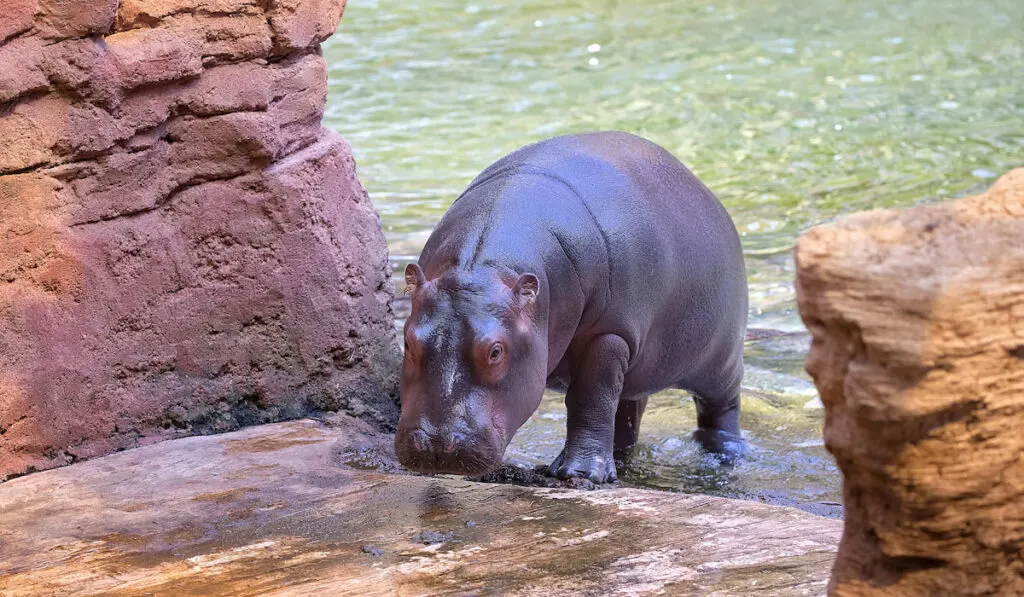
Hippopotamuses are indigenous to Africa. These even-toed ungulates come in third place of being the largest mammals on land, right after rhinoceroses and elephants. Hippos measure around 17 feet long and stand around 5 feet tall. They are heavy creatures that weigh between 1 to 5 tons.
These large mammals can be recognized by their bulky, hairless bodies, small eyes and ears, large snouts and mouths, and blunt, tusk-like canine teeth. Although they are relatively heavy, don’t underestimate hippos’ ability because they can run up to 25 miles per hour!
Hippos spend most of their days in the water. In sub-Saharan Africa, you can find them swimming or cooling their bodies near rivers, swamps, lakes, and other water bodies. Being herbivores, they mainly feed on plants, grasses, and aquatic plants.
Five major hippo species exist in this world, including the East African hippopotamus, South African hippopotamus, West African hippopotamus, Great Northern hippopotamus, and Angola hippopotamus.
15. Zebra
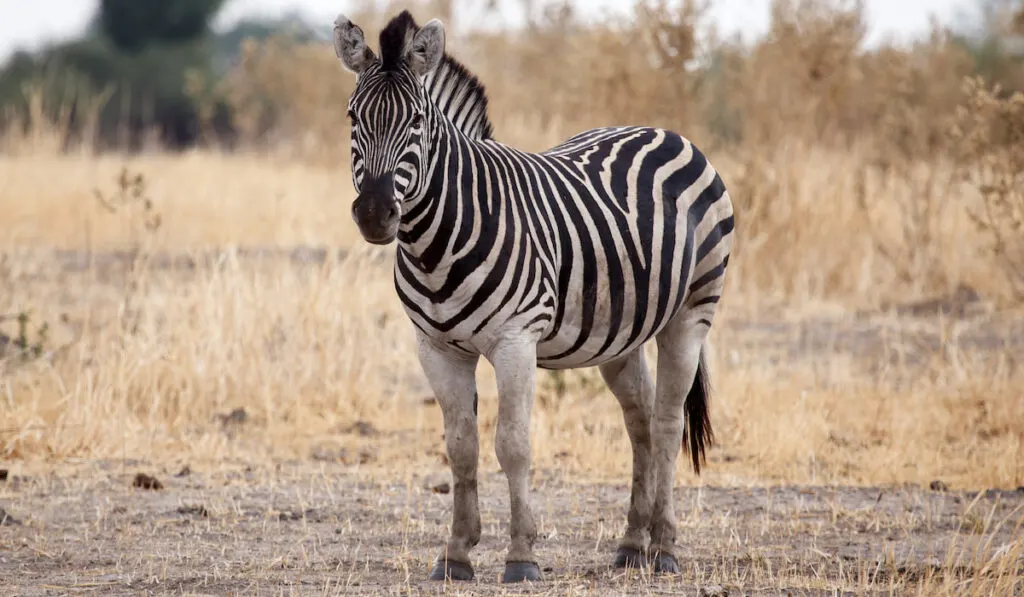
These mammals are one of the animals that you can easily recognize. Zebras are odd-toed, single-hoofed animals that are native to Africa. There are three varieties of zebras that still exist today. These include the Plains zebra, Grevy’s zebra, and Mountain zebra.
Of these three species, only Grevy’s zebras are considered endangered and rare. Zebras stand between 3.5 and 5 feet at the shoulder and weigh between 440 and 900 pounds. They are herd animals and can live up to 25 years.
Being herbivores, they mostly graze and feed on plants, shrubs, bushes, and grasses. Zebras are considered wild equines, and they are hard to handle.
Besides, they are more aggressive and energetic compared to domesticated horses. They are known to attack, kick, or bite humans trying to get close to them.
Final Thoughts
Out of all the animals listed above, some are classified as endangered species and are being conserved by many wildlife organizations from different parts of the world. This is because of the decrease in their population due to the destruction of their natural habitats and illegal hunting by unlicensed poachers and hunters.
By all means, we should protect these animals from becoming extinct and start to appreciate their uniqueness by not turning them into mere trophies.
Resources
- http://www.ultimateungulate.com/whatisanungulate.html
- https://faunafacts.com/cows/do-cows-have-toes/
- https://en.wikipedia.org/wiki/Hoof
- https://ker.com/equinews/horses-odd-toed-ungulates/
- https://www.horsehealthproducts.com/horsemans-report/hoof-leg-care/hoof-anatomy
- https://www.mannapro.com/homestead/hoof-care-for-goats
- https://opensanctuary.org/how-to-trim-a-sheeps-hooves/
- https://www.nadis.org.uk/disease-a-z/sheep/lameness-control-in-sheep/
- https://en.wikipedia.org/wiki/Rhinoceros
- https://en.wikipedia.org/wiki/Bovidae
- https://animals.mom.com/kinds-buffaloes-there-5307.html
- https://en.wikipedia.org/wiki/Gazelle
- https://en.wikipedia.org/wiki/Bison
- https://www.livescience.com/32115-bison-vs-buffalo-whats-the-difference.html
- https://feralhogs.extension.org/physical-characteristics-of-feral-hogs/
- https://en.wikipedia.org/wiki/Wild_boar
- https://www.discoverwildlife.com/animal-facts/mammals/facts-about-giraffes/
- https://blog.education.nationalgeographic.org/2018/01/24/what-is-killing-these-funny-looking-antelope/
- https://animals.sandiegozoo.org/animals/antelope
- https://www.nwf.org/Educational-Resources/Wildlife-Guide/Mammals/Moose
- http://www.alaskannature.com/moose.htm
- https://www.livescience.com/27408-moose.html
- https://www.animalfunfacts.net/ungulates/84-hippopotamus.html
- https://en.wikipedia.org/wiki/Hippopotamus
- https://www.nationalgeographic.com/animals/mammals/facts/tapirs
- https://tapirs.org/tapirs/
- https://kids.nationalgeographic.com/animals/mammals/facts/zebra
- https://www.discoverwildlife.com/animal-facts/mammals/facts-about-zebras/
